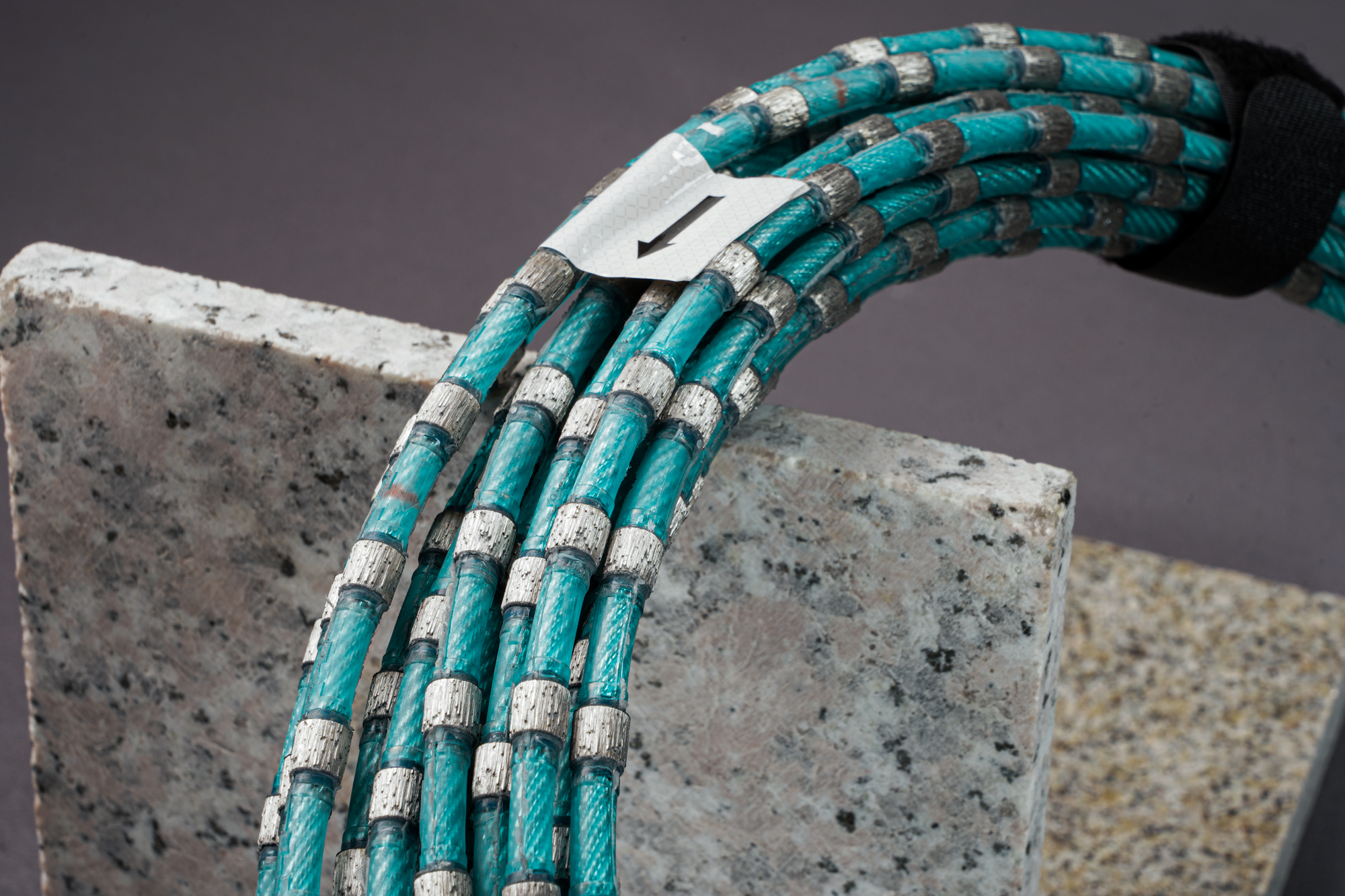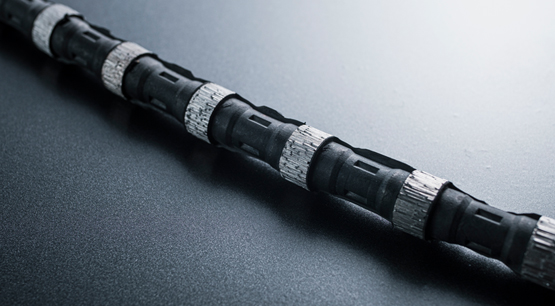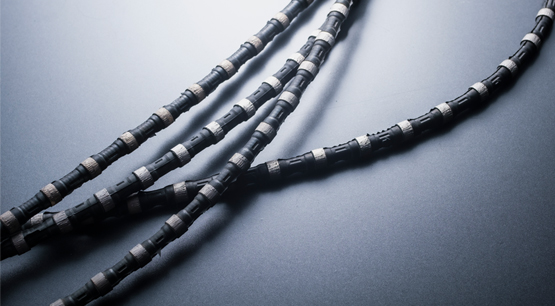The production process of diamond wire saw includes material selection, batching, mixing, cold pressing, molding, hot pressing sintering, surface treatment, inner hole processing, wire threading, injection (or vulcanization), blade cutting, and packaging.
1. Material selection: In this initial step, manufacturers choose high-quality diamond particles and suitable metal wire ropes as raw materials. The diamond particles should be hard, wear-resistant, and have the required size and shape. High-strength steel wires are typically used for the metal wire ropes to ensure the saw's strength and durability.
2. Batching: The prepared diamond particles and metal powders are mixed in specific proportions according to the requirements of the diamond wire saw's bead specifications and usage. Typically, an additional 5%-10% of materials is prepared as a reserve for replacing any defective products.
3. Mixing: After batching, the diamond particles and metal powders are put into a mixing device (usually a 3D mixer) for thorough blending, typically for a duration of at least 2 hours. This ensures a uniform distribution of diamond particles within the metal powder for better bonding.
4. Cold pressing: The mixture is then placed into molds along with the steel wire rope for cold pressing. This step ensures a tighter integration between the diamond particles, metal powders, and wire rope, forming a preliminary preform. Cold pressing significantly reduces dust production and enhances the product's performance and density. Preforms are weighed and checked for compliance after cold pressing, and those failing the standards are reprocessed.
5. Molding: The cold-pressed preforms are further processed by placing them into specific molds, closely controlling their shape and dimensions to ensure the wire saw's accuracy and consistency.
6. Hot pressing sintering: After molding, the preforms in the molds undergo hot pressing sintering. This process subjects the preforms to high temperature and pressure, enabling full integration between the diamond particles and metal powders, resulting in a robust diamond wire saw bead.
7. Surface treatment: After sintering, the diamond wire saw may have some uneven surfaces. Surface treatment involves machining and grinding the wire saw to achieve a smooth and uniform surface.
8. Inner hole processing: Diamond wire saw beads typically have an inner hole for attaching the metal wire rope. In this step, the inner hole is processed and treated to ensure its quality and precision.
9. Wire threading: The structure of the wire saw requires steel wires to be threaded into the metal wire rope to enhance its strength and stability. During this stage, the steel wires are threaded through the metal wire rope, ensuring a tight connection.
10. Injection (or vulcanization): This step depends on specific requirements. Some diamond wire saws are subjected to injection molding for better bonding and waterproofing, especially those using plastic connectors. Others may undergo vulcanization, where a layer of rubber is applied to the surface of the steel wire rope to improve its durability and water resistance, typically done using a flat vulcanization machine.
11. Blade cutting: This is the final step in manufacturing the diamond wire saw. In this stage, the blade part of the wire saw is processed and cut to make it possess sharp cutting edges, often done using an automatic blade cutting machine.
12. Packaging: Finally, the finished diamond wire saws are packaged to ensure they remain undamaged during transportation and storage, making it convenient for end-users.

The production process of diamond wire saw
Publish date:2023-08-06 11:51:57 Article From:Linsing diamond tools Clicks:







